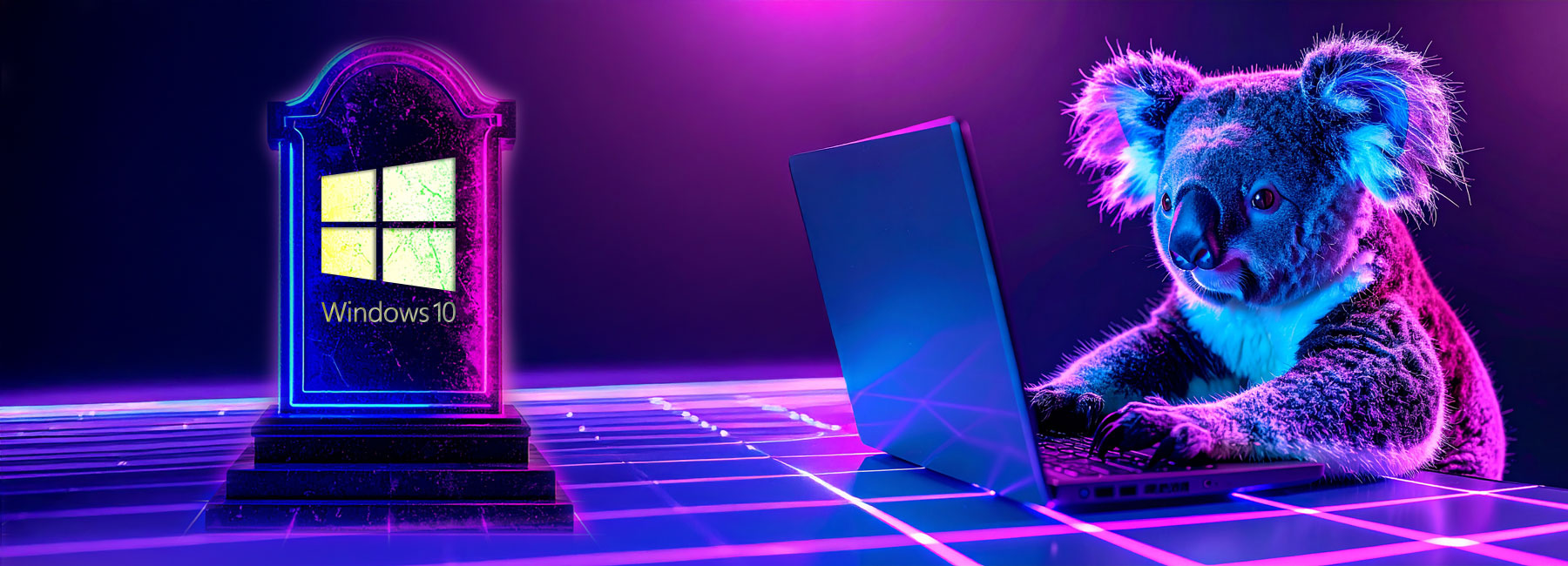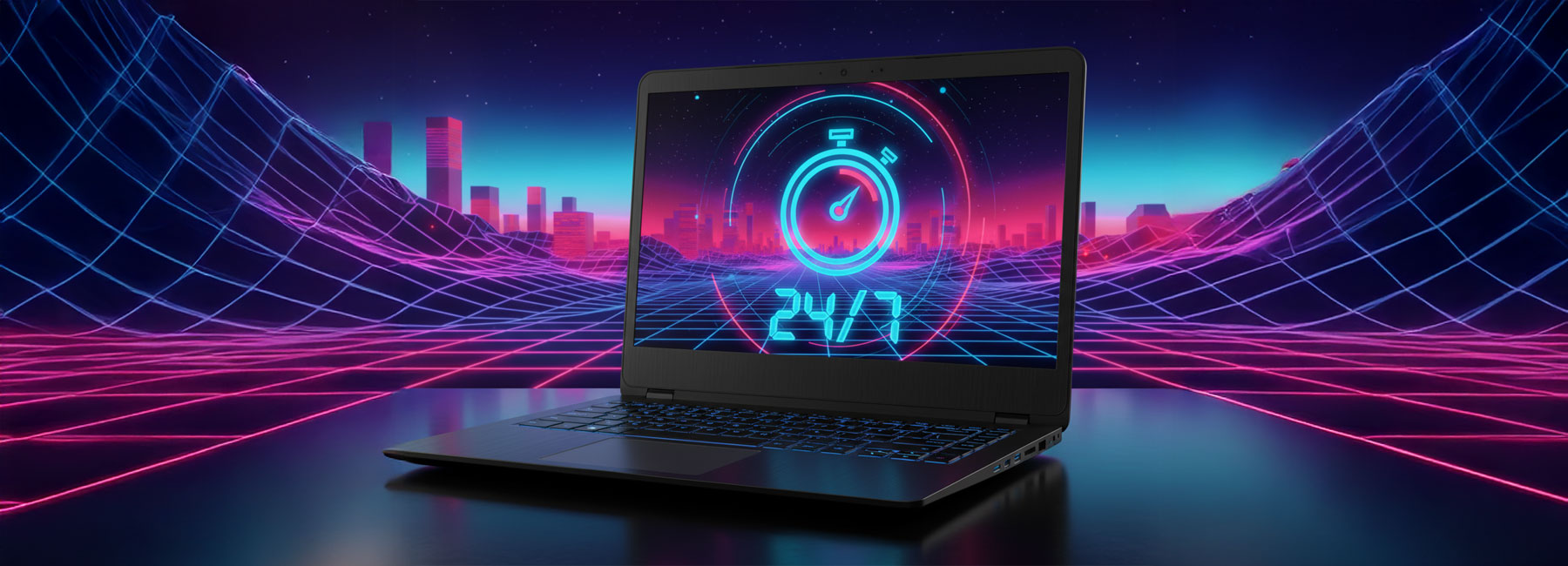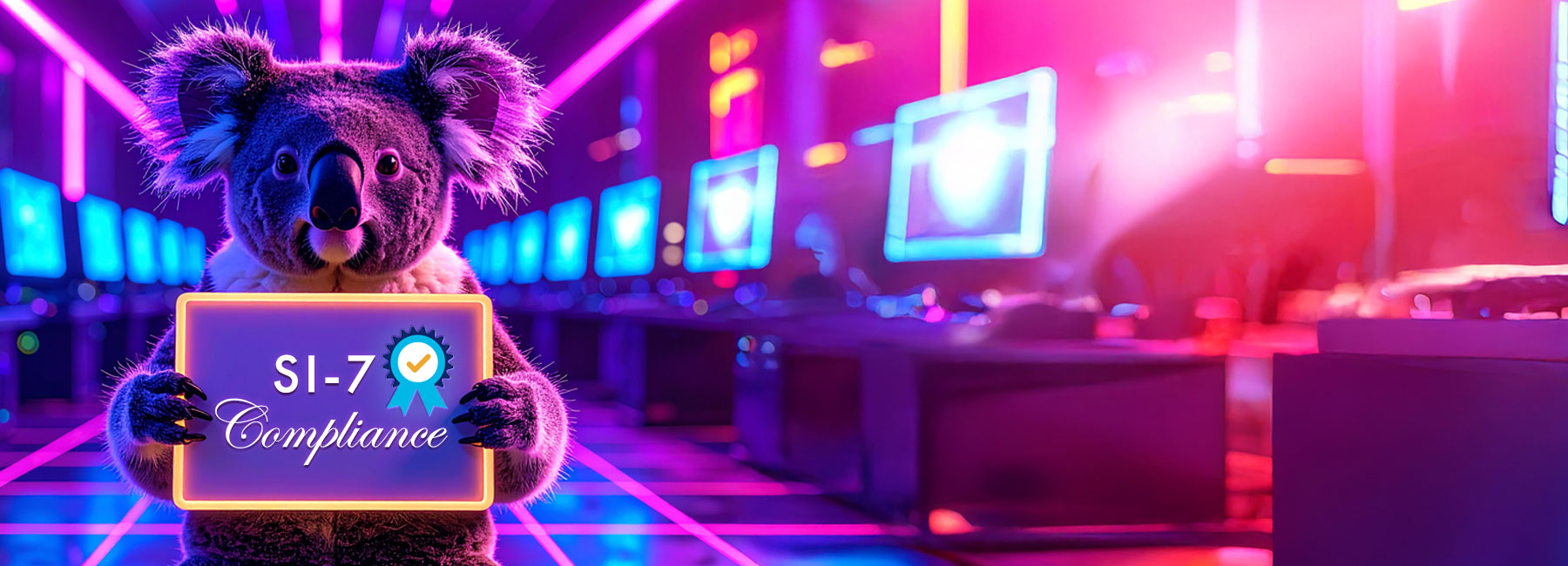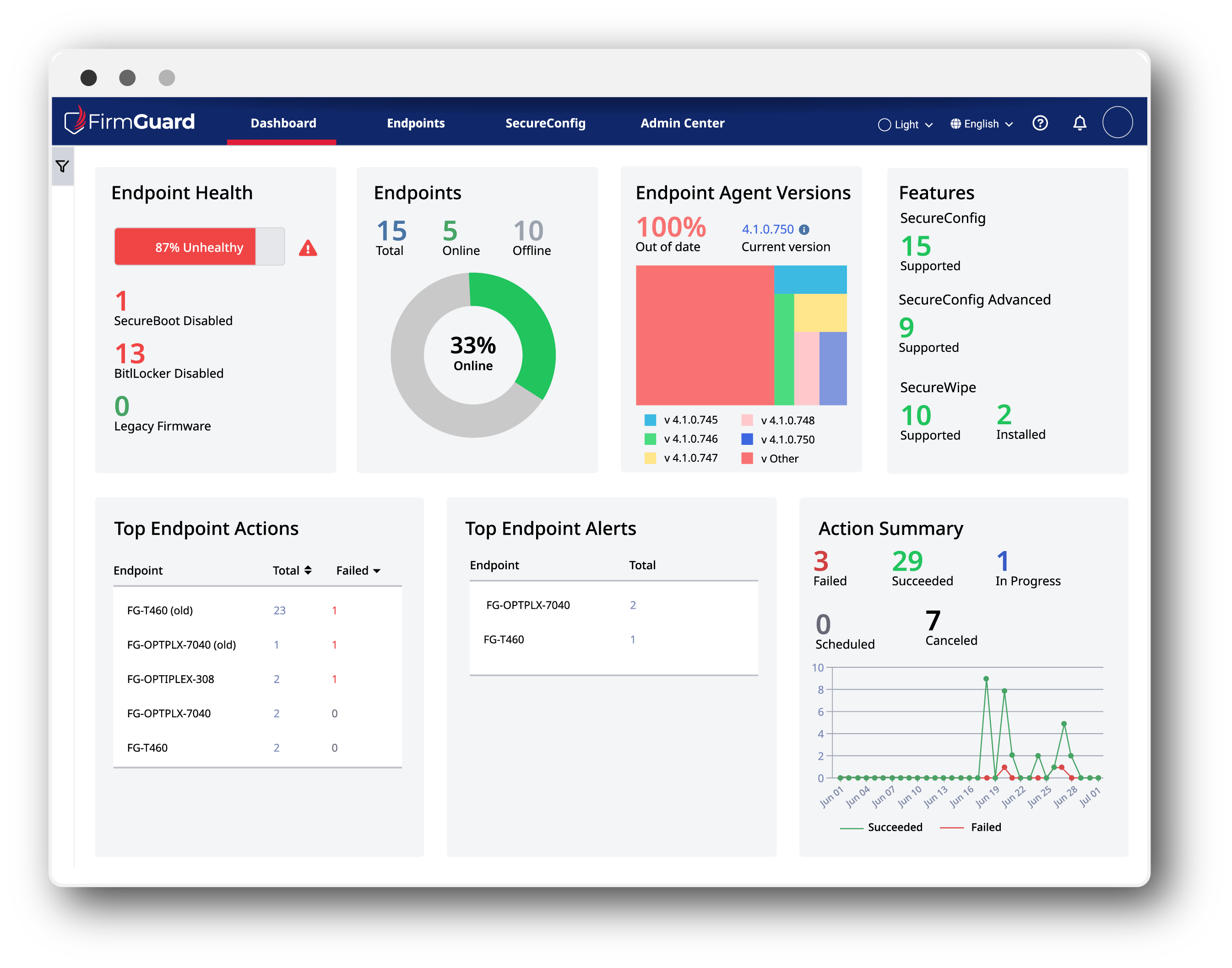By October 2025, Windows 10 will officially reach its end of life. That gives IT and security leaders just over 2 more months to assess, upgrade, or securely retire millions of endpoints. For many organizations, that upgrade path is already well underway. But here’s the uncomfortable truth: thousands of devices simply can’t make the jump to Windows 11.
This isn’t just an infrastructure challenge. It’s a growing security blind spot, especially for remote-first and hybrid enterprises. If your organization has aging laptops or desktops scattered across home offices, and those machines can’t be upgraded, you’re holding onto idle assets that still contain live data. And the risk is real.
Let’s talk about what to do with these stranded endpoints before they become your next audit failure or breach vector.
The Unspoken Risk in Remote Device Obsolescence
Microsoft’s hardware requirements for Windows 11, particularly around TPM 2.0 and supported CPUs, have effectively ruled out upgrades for a significant number of older endpoints. That includes machines still in use by distributed teams, as well as retired devices sitting in employee closets or home storage.
In traditional office environments, IT could collect those machines, wipe them, and retire them responsibly. But in a world where your “tech closet” might be spread across five time zones, this model breaks down fast. The result? Untracked, unsecure devices that contain sensitive data but are no longer visible to IT or security teams.
The assumption that “offline equals safe” is a dangerous one. Even dormant machines often contain cached credentials, internal files, saved sessions, browser history, or customer data. If those machines are lost, stolen, sold, or improperly discarded, your organization could be exposed to significant regulatory, reputational, or financial damage.
What Not to Do (And Why It Matters)
Many organizations delay these decisions or rely on improvised solutions that create more risk than they solve. Here are three approaches we see far too often—and why each is flawed:
- Relying on the user to wipe the device. This might sound efficient, but it’s neither consistent nor verifiable. Most employees aren’t trained in secure data destruction practices, and even fewer know how to follow standards like NIST SP 800-88 (Guidelines for Media Sanitization).
- Assuming full-disk encryption is enough. Encryption helps when configured properly and actively enforced. But once a machine is unlocked or decrypted, that protection disappears. Encryption isn’t a substitute for sanitization.
- Doing nothing. This is perhaps the most common outcome. Devices sit in a drawer for years until they’re eventually e-wasted or recycled. Along the way, the data inside remains intact, untracked, and entirely outside of your security governance.
The real issue here isn’t the device. It’s the lack of visibility and policy-based control once an endpoint reaches end-of-life.
What a Secure Retirement Strategy Looks Like
In this landscape, a secure endpoint retirement process needs to be remote-first, policy-enforced, and auditable. Shipping devices back to a central location is costly, slow, and often impractical for remote organizations. At the same time, trusting users to handle secure wipes on their own creates major inconsistencies. And zero paper trail.
The most scalable, compliant path is to centrally trigger secure data destruction remotely, using tools that can enforce wipe policies, lock down devices during execution, and generate a verifiable certificate of erasure.
This approach eliminates the need for physical access while ensuring you have defensible proof that sensitive data is no longer accessible, no matter where the device is.
Where FirmGuard SecureWipe Fits In
That’s exactly the problem FirmGuard’s SecureWipe feature was built to solve.
SecureWipe allows IT and security teams to initiate policy-based remote data wipes that are cryptographically verifiable and fully auditable. Whether you’re decommissioning 10 machines or 10,000, the process is consistent, secure, and scalable.
Key features include:
- Remote execution: Trigger secure data wipes from anywhere, regardless of physical access.
- Tamper protection: Devices are locked during the wipe process to prevent user interference.
- Compliance-ready logs: Every action is logged with timestamp, device ID, user ID, and result.
- Audit trail: Proof of destruction is tied to regulatory frameworks like NIST SP 800-88, ISO 27001, HIPAA, and GDPR.
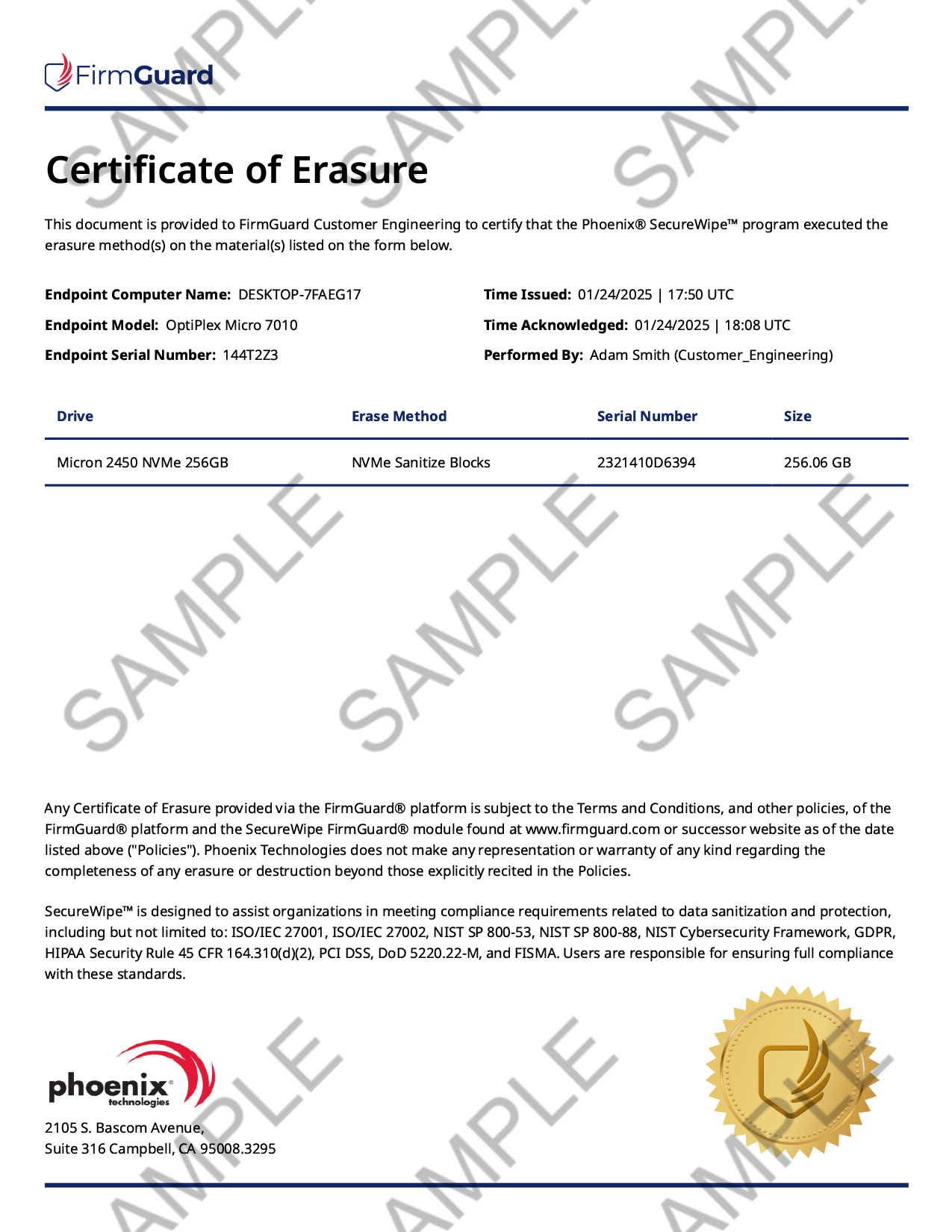
Implementing a Remote EOL Device Workflow
A good endpoint lifecycle doesn’t end at replacement. It ends at secure retirement. Here’s how to structure a remote-friendly workflow that keeps your data protected and your audit trail clean:
- Identify devices that are no longer upgradeable. Maintain visibility into fleet status, even if assets are remote.
- Classify risk by evaluating which devices store sensitive data or had access to critical systems.
- Initiate a SecureWipe for targeted devices. This should be centrally controlled and policy-driven, not ad hoc.
- Log the results. Maintain a permanent, exportable record of successful wipes, tied to user and device IDs.
- Offboard cleanly. Communicate to the user, confirm deactivation, and update your asset management records.
This process not only reduces your threat surface, it also demonstrates to regulators, partners, and auditors that your organization takes data governance seriously, even at the margins.
The Compliance Angle
Every major regulatory framework – from HIPAA to GDPR to ISO 27001 – expects organizations to manage data throughout their lifecycle, including during decommissioning. If a retired device still contains protected data, you’re still accountable for it.
The right tooling should give you:
- Proof of erasure
- Visibility across your endpoint fleet
- Confidence that no residual data remains
SecureWipe helps you achieve this with minimal user interaction, no shipping, and no ambiguity. Just secure, verifiable action.
Why This Isn’t Just About Windows 10
Yes, this post focuses on the Windows 10 EOL transition, but the issue is much broader. Every hardware refresh cycle, OS upgrade, or remote offboarding scenario presents the same underlying risk: untracked devices that still hold sensitive data.
The organizations that treat endpoint retirement as repeatable, policy-driven security control are the ones best positioned to avoid unnecessary exposure.
This isn’t a one-time fix. It’s part of building a future-proof security program.
Eliminate the Risk Before It Lingers
Remote work isn’t going away. Neither are compliance audits or opportunistic attackers.
The longer obsolete devices sit unaccounted for, the greater your exposure. By implementing a structured, scalable approach to remote device retirement, leveraging tools like FirmGuard SecureWipe, you can close the loop on data lifecycle management, without relying on luck, trust, or physical access.
Want to see how SecureWipe works in your environment? Book your FirmGuard demo to learn more.

